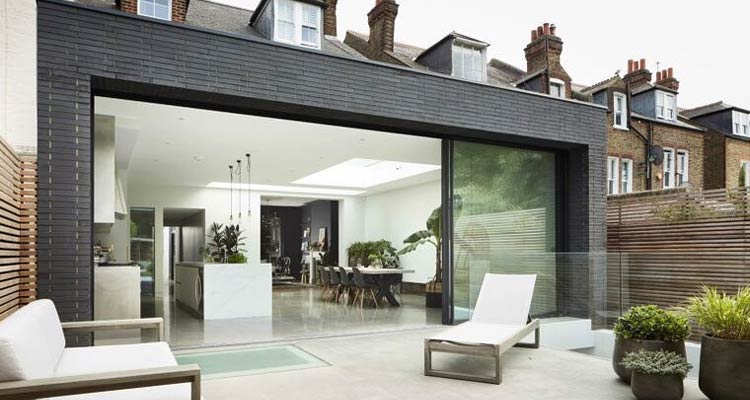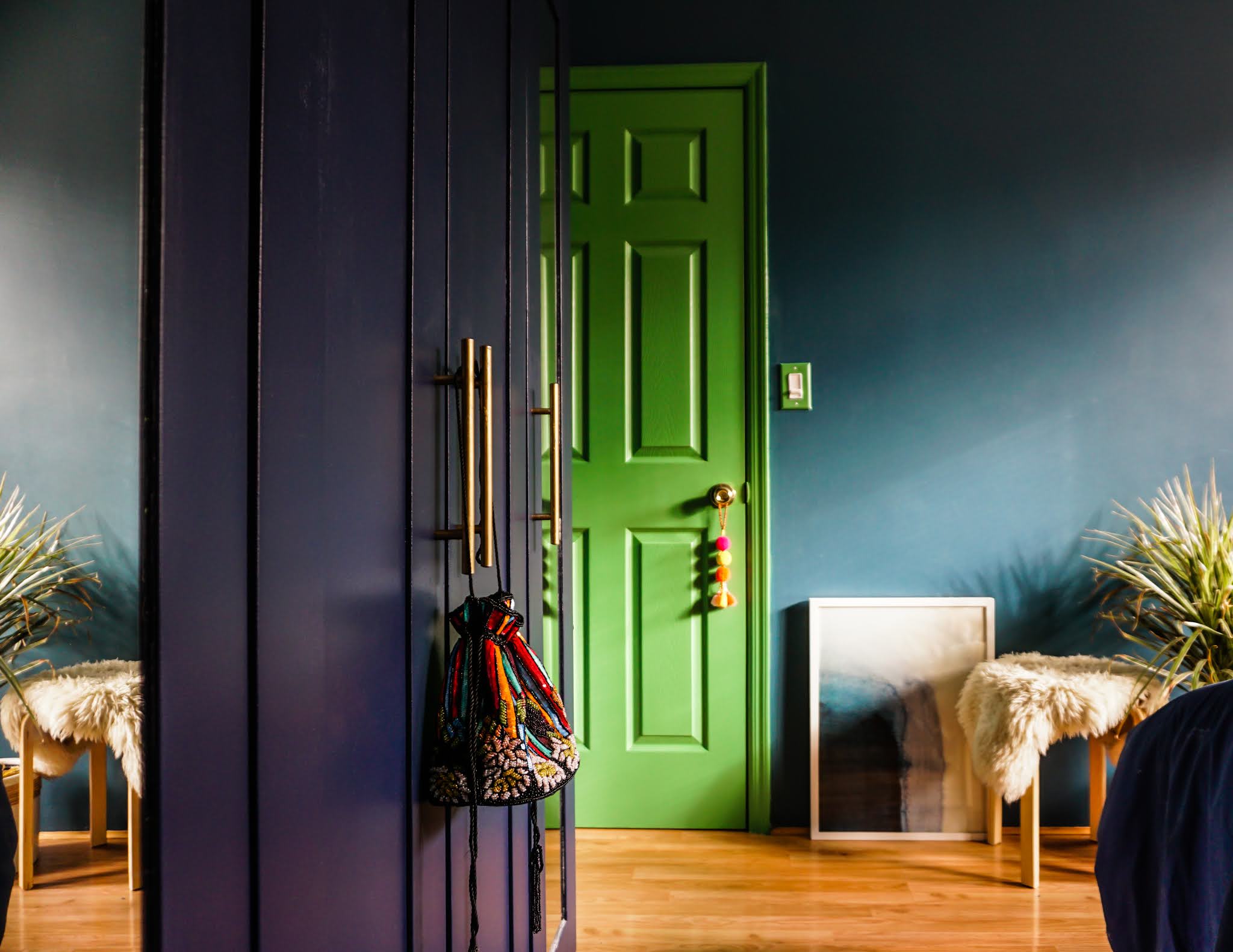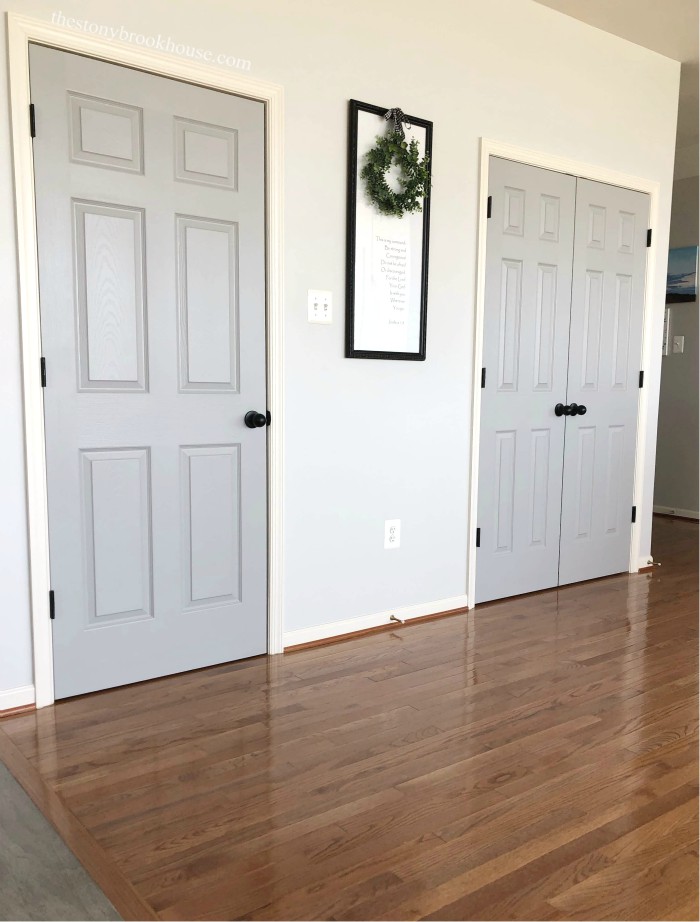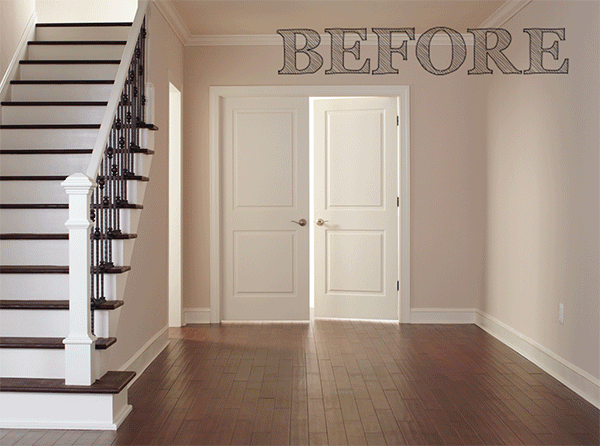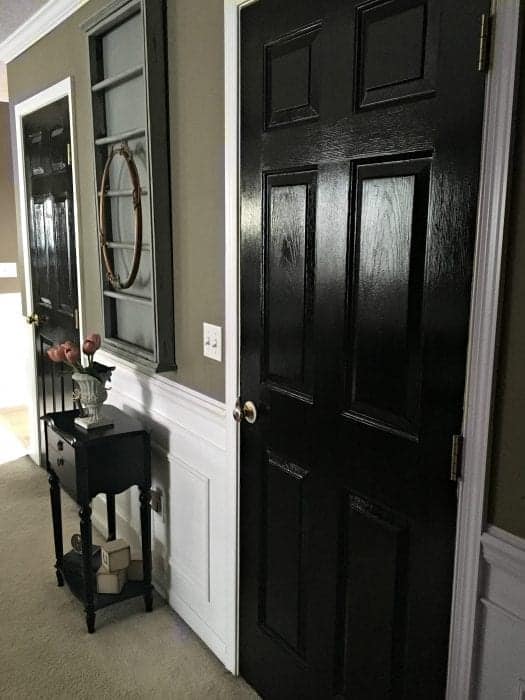Before deciding whether to paint your interior doors a glossy black, there are some important things you should consider. While black doors can make a bold statement in any room or home, there are some pros and cons to painting your doors black. Knowing the potential drawbacks and advantages to using black on your interior doors is paramount, so in this article, we’ll discuss the pros and cons of black interior doors. Should I Paint My Interior Doors Black? Pros & Cons
The pros of choosing to paint your interior doors black include a sense of drama and boldness that other colors may lack. Black interior doors can also draw attention to the architecture of your home and lend the room a sense of mystery. It can be a great option for a modern or contemporary interior design. Black paint can also be more durable than lighter colors and will show less wear and tear over time. However, there are also potential cons to making black interior doors a part of your home's aesthetic. To begin with, dark tones absorb heat, while light tones reflect it. This means that darker colors can make a space feel warmer, something that may not be ideal for hotter climates or during the summer months. In addition, black interior door paint may not be as forgiving when it come to dirt and finger smudges. Black paint fixes more easily to dust and dirt particles and may require more frequent dusting and cleaning to keep it looking its best. It is also important to keep in mind that darker colors may make a room look smaller and more closed off, something you should keep in mind if your home is already lacking in natural light. The Pros and Cons of Black Interior Doors
If black isn't the right color for your interior doors, there is a world of other colors to choose from, and some may be more suitable for your home. To achieve a light and airy look for your interiors, you may want to consider pastel colors and lighter tones, such as a light blue, green, or pink. Soft, muted tones like these can make a room appear larger and bring a feeling of serenity to any space. Rich jewel tones, such as a deep green, purple, or sapphire blue, are also popular options and can add a touch of elegance to any door. If you opt for a bright color, make sure to choose one that will complement the other colors in the room. Bright yellows, oranges, and pinks can make a statement, but if not carefully chosen can be overwhelming. If you opt to stay away from color and would rather keep your interior doors all white, then a high-gloss white paint may be just the thing for you. While this classic look can add a touch of sophistication to any room, a distressed or antiqued finish on the door may be better for you if you're going for a shabby-chic ambiance in your home. Paint Your Interior Doors a Dreamy Color
Before you start painting your interior doors, there are some key steps you should take to make sure that the process is as easy and smooth as possible. Surface preparation is one of the most important steps in the painting process and one that should never be skipped. This involves cleaning the door with a mild detergent or degreaser to remove any dirt and grease. After cleaning the door, you should sand any areas that may have uneven texture or rough patches. Once the door is prepped, you should apply a high-quality, oil-based primer to ensure that the paint adheres to the surface correctly. Before adding color to your interior doors, a few coats of sealer or wood conditioner can also help to ensure that your paint job will last for years to come. Painting Interior Doors: What You Should Know Before You Start
Whether or not you decide to paint your doors black is entirely up to you. Ultimately, it comes down to what look you are going for in your home. Black can make a bold statement in any room and can be a great way to draw attention to the architecture of your home, but it's important to keep in mind that darker colors can make a room feel smaller and can hold onto heat more than lighter colors. Is Black the Right Color for Your Interior Doors?
Painting interior doors is a relatively simple task that can be completed even by homeowners with no prior experience. However, it is important that you follow the proper steps in order to achieve the best results. Surface preparation is key, so make sure all doors are cleaned and sanded down before they are painted. Primer is also essential, as it helps to ensure that the paint adheres properly to the surface. Additionally, it's important to consider the type of paint you use as well as the conditions in which you are working when painting your doors. What Every Homeowner Should Know Before Painting Interior Doors
When it comes to choosing the right color for your interior doors, the options are seemingly endless, and you may find yourself struggling to settle on the perfect shade. To start with, you should take into account the other colors in the room, such as wall color, flooring, and furniture. Contrasting colors can make a powerful statement, while complimentary colors may be more soothing. Neutral tones like beige, white, and gray can be great options if you are looking for something less daring. Deep colors like teal or hunter green can be perfect if you're looking to add a touch of drama to your home. Pastels like pink, light blue, and peach can bring a sense of peace and tranquility to a room. Or, if you are feeling daring, try adding a bright hue such as yellow, orange, or hot pink. Interior Door Paint Colors - Ideas & Tips for Finding the Perfect Color
Before you start painting your interior doors, there are some key tips every homeowner should keep in mind. Begin by preparing the door for painting, which includes cleaning and sanding it down. Applying a high-quality primer is key to ensuring a long-lasting and high-quality finish. When it comes to finding the perfect color, remember to take into account other colors in the room and determine whether you're looking for something contrasting or complimentary. What You Should Know Before Painting Your Interior Doors
Painting your interior doors black can bring boldness to any space, however, there are some potential drawbacks when it comes to this color choice. To begin with, black is known to absorb heat, making it less ideal for warmer climates and during the summer. It can also be less forgiving when it comes to dirt, requiring more frequent cleaning and dusting. In addition, dark colors can make a room look smaller and more closed off, something to keep in mind if your home is lacking in natural light. The Pros and Cons of Painting Interior Doors Black
Painting interior doors black can give a room a bold and dramatic feel. To prepare for painting, start by cleaning the door and sanding it down. Apply a high-quality, oil-based primer and a few coats of sealer or wood conditioner to ensure that your paint job will last for years. Once these steps are complete, you can begin to apply two to three coats of black paint. Depending on the paint brand, you may need to apply a coat of protective sealant or top coat after the second or third coat. How to Paint Interior Doors Black
If you are considering painting your interior doors black, it's important to weigh both the pros and cons of this color choice. On the plus side, black can bring a sense of drama and boldness to any room and draw attention to the architectural features of your home. It can also be a more durable option than lighter colors, showing less wear and tear over time. On the other hand, black can absorb heat, making it less desirable for hotter climates or during the summer months. Darker colors can also be harder to clean and can hide dirt and grime, requiring more frequent dusting. Also, black can make a room look smaller and more closed off, particularly if there is limited natural light. Should I Paint My Interior Doors Black? Discover the Pros and Cons
The Benefits of Painting Interior Doors Black
 Painting your interior doors
black
can give your house an unprecedented look, transforming it from ordinary to gritty and sophisticated. Black is a dramatic color choice for doors and it can provide a nice contrast to neutral wall colors. Here are the main advantages of choosing black for your doors.
Painting your interior doors
black
can give your house an unprecedented look, transforming it from ordinary to gritty and sophisticated. Black is a dramatic color choice for doors and it can provide a nice contrast to neutral wall colors. Here are the main advantages of choosing black for your doors.
Cohesion
 Whether you’re completely remodeling your house or just adding a touch of black to complement an area, a black door can help bring continuity and cohesion to the room. Keeping wall and door colors the same ensures a uniformity of design and color that offers a cohesive interior look which can be pleasing to the eye.
Whether you’re completely remodeling your house or just adding a touch of black to complement an area, a black door can help bring continuity and cohesion to the room. Keeping wall and door colors the same ensures a uniformity of design and color that offers a cohesive interior look which can be pleasing to the eye.
Style
 A
black door
is likely to be one of the most unique elements in the interior of your home and can add an element of style to an otherwise standard design. This is because the juxtaposition between the white walls of most homes and a black door makes it stand out and become the centerpoint of the design.
A
black door
is likely to be one of the most unique elements in the interior of your home and can add an element of style to an otherwise standard design. This is because the juxtaposition between the white walls of most homes and a black door makes it stand out and become the centerpoint of the design.
Durability
 A black door is an investment because it will last a lifetime. Composed of a metal or a composite material, a black door is designed to hold up to heat, cold, dust and dirt; all of which make it a great long-term choice. A good quality paint job should last for years and won’t fade or crack, even in extreme weather conditions.
A black door is an investment because it will last a lifetime. Composed of a metal or a composite material, a black door is designed to hold up to heat, cold, dust and dirt; all of which make it a great long-term choice. A good quality paint job should last for years and won’t fade or crack, even in extreme weather conditions.
















